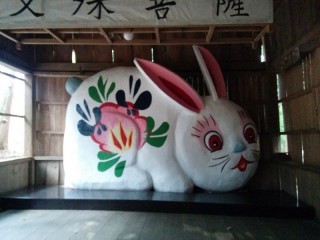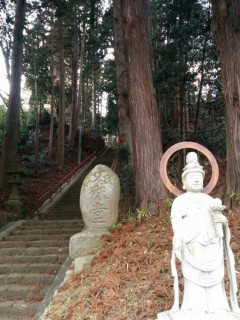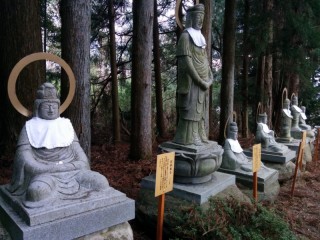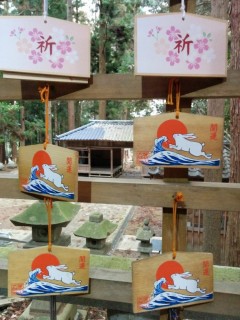Loading
Search
▼ Bunny Shrine in Sendai
- Category:Shrine and Temple
Shinto, Buddha, and Some Funny Bunnies
Those who traveled or lived in Japan more than a few days sometimes come to the thinking that “If you have seen one shrine or temple, you have seen them all.” While many shrines and temples have common characteristics, it is the little extras that add a sense of charm. For me, the best shrines or temples need to have a balance of: easy access yet not well-known, an interesting history, and some fun things to see. Matching and exceeding my own standards, the Bunny Shrine in Sendai hops to the top of my favorites list.
What I call the Bunny Shrine, is officially called Jyusozan-
What I call the Bunny Shrine, is officially called Jyusozan-
Mojyubosatsudo (鷲巣山文殊菩薩堂). This magical place is about a 15 minute walk away from the famous Hachiman Shrine. Just walk upstream of the Hirose River on the Sakunami Highway, then look for stairs that lead up into a cluster of towering cedar trees (see picture). Go up and you will find a mix of Shinto, Buddha, and funny bunny images abound. There is so much going on at this shrine that it is even hard to begin to explain.
In 1603, founder of Sendai feudal lord Date Masamune built Jyusozan-Mojyubosatsudo. This was just two years after he built the city's castle. You'll see a mix of Buddhist temple and Shinto shrine connections here. It was a simpler time, regarding religions as more similar than different.
This idea was commonplace nationwide until shortly after the Meiji Restoration in 1868 when regulations enforced separations. However, in fact, this place is neither shrine, nor temple. It is a place to worship, or at least give thanks and gratitude to, the spirit of the rabbit.
Why? Why not?
The real reason would be because Date Masamune was born in the year of the rabbit, according to the Chinese lunar calendar. As such, there are several rabbit images including pictures, wooden votive tablets, a statue at the second set of stairs, and the massive bunny ready to scare any unknowing visitor that walks through the front gate and glimpses to the right! Look closely at the roof on the main shrine building and from the right angle you can see some rabbit decorations doing handstands! Sadly, there are no live rabbits running around...unless they were hiding when I visited.
Several minor shrines and some Buddhist symbols can be found around the rest of the compound. Most obvious are 33 Kannon statues flanking an edge from the top of the first staircase to the main shrine. Kannon is a goddess of mercy, said to be able to transform itself into 33 forms. These were constructed relatively recently in the four century history of the Bunny Shrine. The statues were erected in 2003 to mark the 400th anniversary of the shrine. I am puzzled why the statues wear white bibs.
Usually only Jizo statues wear bibs, and they are almost always red. Perhaps it is a color to match with the rabbit theme?
Usually only Jizo statues wear bibs, and they are almost always red. Perhaps it is a color to match with the rabbit theme?
Upon a little more research, I learned this is one of the 12 Chinese zodiac animal pilgrimage sites in Sendai. I actually already went to a few of the other locations with other animal spirits by coincidence, such as the dragon, horse, and monkey locations. I did not realize their significance at the time.
The animal motifs at other locations seem to be something just added onto a regular temple in most cases. Meanwhile the Bunny Shrine seems to have the most to see by far if judging by its representative animal. Also because of its interesting history, I would recommend this location above all others. The Bunny Shrine makes for a few fun photos, is not crowded, and is full of mystery. Hopefully after reading some of its secrets, you can enjoy your visit even more.
Looking for more pilgrimage trekking adventures in Sendai? Try the 33 Kannon pilgrimage or the Seven Lucky Gods pilgrimage.
- March 5, 2016
- Comment (0)
- Trackback(0)







